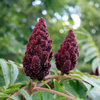Mango Stone Help
best_botanist
18 years ago
Related Stories

MATERIALSRaw Materials Revealed: Brick, Block and Stone Help Homes Last
Learn about durable masonry essentials for houses and landscapes, and why some weighty-looking pieces are lighter than they look
Full Story
ORANGEMango: Orange for the Rest of Us
On the fence about decorating with orange? Ease into it with mango, a gentler tone that makes rooms no less striking
Full Story
COLORColor of the Week: Mango
Use a bit of bold, fun, summery orange on bedroom accent walls, kitchen cabinetry and more
Full Story
LANDSCAPE DESIGNWhat the Heck Is a Ha-Ha, and How Can It Help Your Garden?
Take cues from a historical garden feature to create security and borders without compromising a view
Full Story
STANDARD MEASUREMENTSThe Right Dimensions for Your Porch
Depth, width, proportion and detailing all contribute to the comfort and functionality of this transitional space
Full Story
KITCHEN DESIGNDesign Dilemma: My Kitchen Needs Help!
See how you can update a kitchen with new countertops, light fixtures, paint and hardware
Full Story
EXTERIORSHelp! What Color Should I Paint My House Exterior?
Real homeowners get real help in choosing paint palettes. Bonus: 3 tips for everyone on picking exterior colors
Full Story
PETSHow to Help Your Dog Be a Good Neighbor
Good fences certainly help, but be sure to introduce your pup to the neighbors and check in from time to time
Full Story
COLORPick-a-Paint Help: How to Create a Whole-House Color Palette
Don't be daunted. With these strategies, building a cohesive palette for your entire home is less difficult than it seems
Full StoryMore Discussions









mrbrownthumb
origamifox
Related Professionals
Doctor Phillips Landscape Contractors · Flagstaff Landscape Contractors · Ramsey Landscape Contractors · Tuscaloosa Landscape Contractors · Weslaco Landscape Contractors · West Chicago Landscape Contractors · Wickliffe Landscape Contractors · Merrifield Landscape Contractors · Murphy Carpenters · St. Johns Carpenters · Apache Junction Fence Contractors · Baltimore Fence Contractors · Fallbrook Fence Contractors · Killeen Fence Contractors · Los Angeles Fence Contractorshvg118
slice
best_botanistOriginal Author